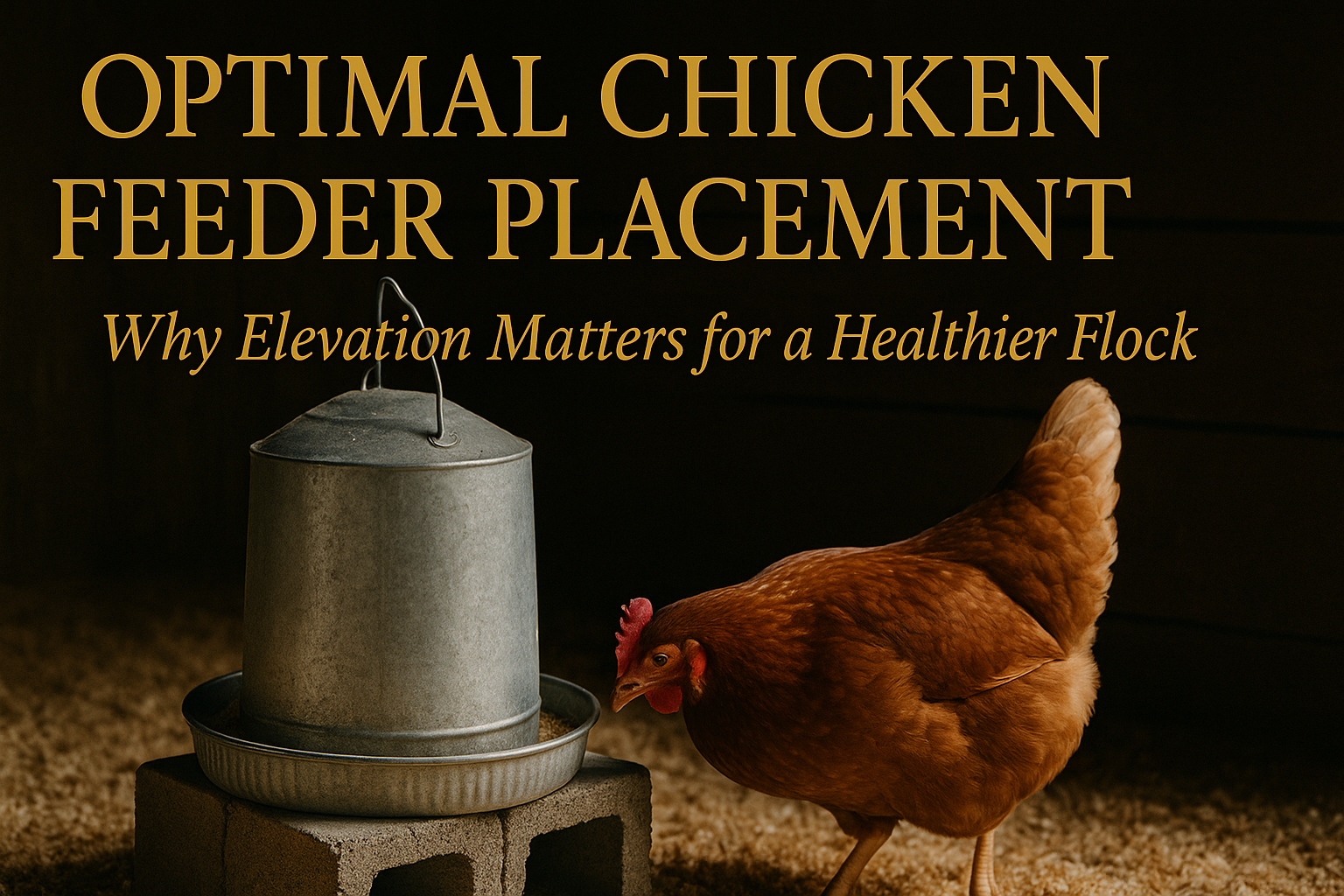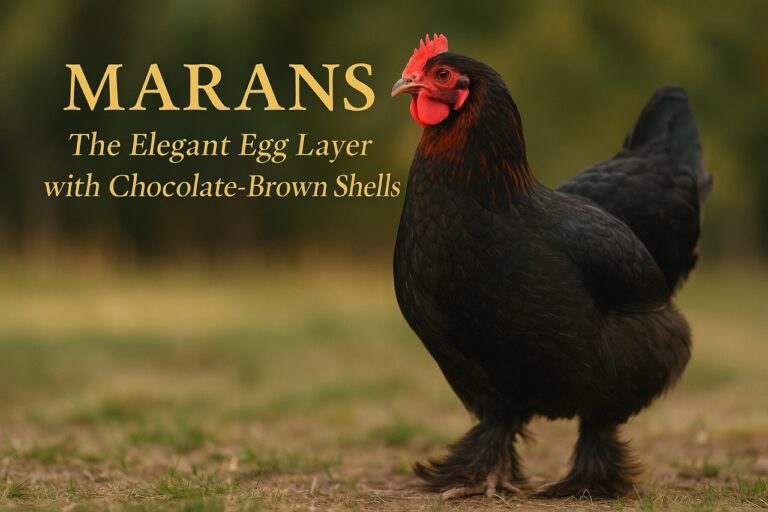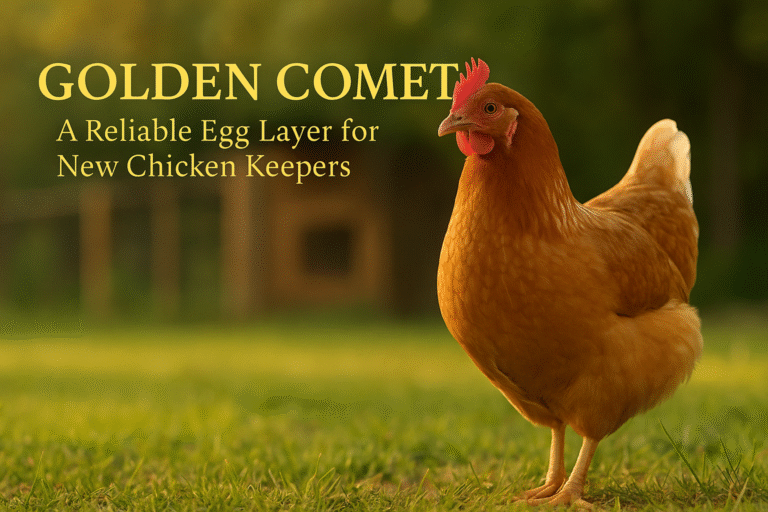🐓 Optimal chicken feeder placement is one of the most overlooked secrets to healthier, happier backyard flocks. Where and how you place your feeder impacts everything — from cleanliness and disease prevention to posture, pecking order, and feed waste. Elevating your feeder isn’t just smart — it’s stewardship.
In this guide, we’ll break down the why and how behind strategic feeder placement — so your chickens eat better, stay cleaner, and thrive longer.
📍 Best Chicken Feeder Placement: Quiet Corners, Clean Access
A well-placed feeder protects your flock’s health while making your life easier. Here’s what works best:
✅ Choose Low-Traffic Areas
Chickens prefer calm zones to eat. Keep feeders away from nesting boxes, perches, and footpaths. Edge corners or low-activity spots inside the coop or run work best.
Avoid: Placing feeders near waterers, where moisture can spoil feed and invite mold.
✅ Shield Feeders from Sunlight and Rain
Direct sunlight and rain can quickly ruin feed. Always place feeders under a roof, overhang, or shaded area. If indoors, keep them away from open windows.
✅ Ensure Fair Access for All Chickens
Feeder crowding leads to bullying. Provide:
- At least 1 feeding port per 4–5 hens
- 360° access if possible (especially for round feeders)
- Enough space to prevent push-outs from dominant birds
🆙 Why You Should Elevate Your Chicken Feeder
Raising your feeder a few inches off the ground might not seem like much — but the impact is massive. Here’s why elevation works:
1. 🚫 Stops Ground Contamination
Chicken droppings, dirt, and shavings naturally accumulate at floor level. Elevating your feeder keeps the feed cleaner and reduces disease risk.
2. 💸 Cuts Down on Feed Waste
When feeders sit on the ground, chickens scratch bedding into them — ruining feed. Raised feeders limit scratching behavior and preserve more food.
3. 🐀 Deters Pests and Rodents
Mice and rats have a harder time accessing elevated feeders, especially hanging ones. Combine with tidy coop practices for maximum protection.
4. 🦴 Improves Chicken Posture
Feeding at beak height promotes healthier neck alignment and digestion. Adjust the height to match the back of your smallest adult bird.
🛠️ Easy Ways to Elevate Your Feeder | Optimal Chicken Feeder Placement
Choose one of these practical elevation setups based on your coop size and budget:
🧱 Cinderblocks
- How to Use: Set the feeder atop two stacked blocks.
- Pros: Cheap, stable, easy to clean.
- Bonus: Add or remove blocks to adjust height.
⛓ Hanging Feeder
- How to Use: Suspend from a ceiling beam using chain or rope.
- Pros: Pest-resistant and floor-free.
- Caution: Needs stable anchoring to prevent swinging.
🪵 Wooden Stand
- How to Use: Build a platform at the desired height.
- Pros: Custom-fit and sturdy.
- Note: Great for coops with flat space and DIY flair.
🧰 PVC Frame
- How to Use: Assemble a lightweight PVC stand.
- Pros: Portable, waterproof, flexible.
- Note: Not ideal for heavier feeders.
🧱 Bricks or Pavers
- How to Use: Stack for a low-lift elevation.
- Pros: Simple, cheap, effective.
- Cons: Fixed height, not adjustable.
🦵 Adjustable Feeder Legs
- How to Use: Built-in on many commercial feeders.
- Pros: Easy to adjust as your flock matures.
🪣 Buckets or Plastic Bins (Temporary Fix)
- How to Use: Flip over and set the feeder on top.
- Pros: Good for testing heights.
- Warning: Can tip or wobble if not stable.
🔧 Maintenance Tips for Elevated Feeders
Even an elevated feeder needs attention. Follow these simple upkeep practices:
- Clean Weekly: Rinse or brush away dust, droppings, and moisture buildup.
- Check for Wobble: Make sure elevation structures stay secure.
- Refill Wisely: Use clear or marked feeders to easily track feed levels.
- Adjust as They Grow: Chickens’ height changes over time — so should your feeder.
💡 Faith + Function: Stewarding Your Coop Well
Implementing optimal chicken feeder placement helps ensure long-term flock health and ease of coop care.
The Bible teaches stewardship — not just of money, but of everything entrusted to us. When you care for your chickens with wisdom and cleanliness, you reflect God’s design for creation: order, peace, and health. Even something as simple as raising a feeder can be an act of intentional care.
“Be diligent to know the state of your flocks, and attend to your herds.” — Proverbs 27:23
📌 Related Reading from Paranoid Prophet
- How Many Chickens to Start With
- Sacred Stewardship: Why Backyard Chickens Matter
- Chicken Dust Bath Guide
- Benefits of Raising Backyard Chickens
- Backyard Chickens and Ethical Living
SOURCES
Proper placement and elevation of chicken feeders are crucial for maintaining flock health, minimizing feed waste, and preventing pest issues. The following resources provide valuable insights and best practices for optimizing feeder setup:
- Feeder Height
This forum thread offers practical advice on adjusting feeder height as chickens grow, suggesting that feeders be placed at a height where chickens have to reach up slightly to access the feed, which helps reduce spillage and contamination. - Optimising Your Chicken Coop Food and Water Set Up
This article discusses the importance of strategic placement for feeders and waterers within the chicken coop. It emphasizes that elevating these items can minimize spillage and contamination, suggesting methods such as placing feeders on bricks or hanging them from the roof. - Raising the Debate: Should Chicken Feeders Be Elevated Off the Ground?
This resource explores the benefits of elevating chicken feeders, including enhanced cleanliness, health, and efficiency in the coop. It recommends elevating feeders approximately 4-6 inches off the ground to encourage comfortable feeding and reduce feed wastage. - Where to Put Chicken Feeder?
This guide provides insights into the optimal placement of chicken feeders, considering factors such as indoor versus outdoor positioning, protection from weather elements, and accessibility for the flock. It also discusses the importance of feeder capacity and preventing access by wild animals.
FAQ: Poultry Care & Backyard Flocks
Feeding Chickens
1. What are the benefits of feeding wheatgrass and hay to chickens in winter?
Wheatgrass and hay provide essential nutrients and forage opportunities during winter when fresh greens are scarce. Wheatgrass is rich in vitamins A and E, while hay offers fiber and enrichment for chickens to peck and scratch.
2. What foods should I avoid feeding my chickens?
Avoid feeding chickens raw potato peels, chocolate, avocado, caffeine, salty snacks, and moldy food. These can cause toxicity or health issues. Always check whether scraps are safe before feeding them to your flock.
3. Can chickens eat cover crops?
Yes, chickens can forage on many cover crops like clover, rye, and Austrian winter peas. These crops provide nutritious greens, but overgrazing should be avoided to maintain healthy crop growth.
Coop and Feeder Management
4. How do I set up the best chicken feeder placement?
Place feeders in low-traffic areas of the coop, away from water sources, to prevent contamination. Elevate the feeder to keep feed clean and discourage pests, setting it at the back height of the smallest adult chicken for comfort.
5. Should I elevate chicken feeders?
Yes, elevating feeders reduces feed waste, prevents contamination from droppings, and makes it harder for rodents to access the feed. Hanging feeders or using platforms are common methods for elevation.
6. How often should I clean the chicken feeder?
Clean feeders weekly to remove any leftover feed, dust, or debris. This prevents mold growth and keeps your flock healthy.
Seasonal Chicken Care
7. What are the best winter cover crops for chickens in the Southeastern U.S.?
Top winter cover crops include winter rye, crimson clover, Austrian winter peas, and daikon radish. These crops improve soil health and provide fresh forage for chickens.
8. How can I keep chickens entertained in winter?
Provide enrichment like hanging cabbages, scatter feed in hay, or offer forage crops like wheatgrass. Keeping them active prevents boredom and promotes healthy behaviors.
9. Should I change chicken feed during winter?
Yes, consider higher-protein feed or supplements during winter when chickens expend more energy staying warm. Providing scratch grains as a treat can also help maintain body heat.
Health and Safety
10. What are the dangers of feeding chickens moldy food?
Moldy food can contain mycotoxins that cause illness or even death in chickens. Always discard moldy or spoiled feed to ensure the health of your flock.
11. Can chickens eat kitchen scraps?
Yes, chickens can eat many kitchen scraps, including vegetables, fruits, and grains. However, avoid toxic items like onions, garlic, and processed foods high in salt or sugar.
12. How do I prevent pests in my chicken coop?
Keep feed elevated, store it in airtight containers, and regularly clean the coop to prevent rodents and insects from taking up residence.
Soil and Forage Management
13. How do cover crops benefit chickens?
Cover crops like rye and clover improve soil health while providing fresh greens for chickens to forage. These crops enrich their diet naturally and reduce the need for store-bought supplements.
14. Can cover crops improve my garden soil while raising chickens?
Yes, planting cover crops fixes nitrogen in the soil, improves aeration, and prevents erosion. Chickens grazing on these crops can fertilize the soil naturally with their droppings.
15. How do I manage crop rotation with chickens?
Divide the area into zones and rotate chickens to prevent overgrazing. Allow crops to regrow in one section while another is being grazed. This approach maintains healthy forage and soil.




